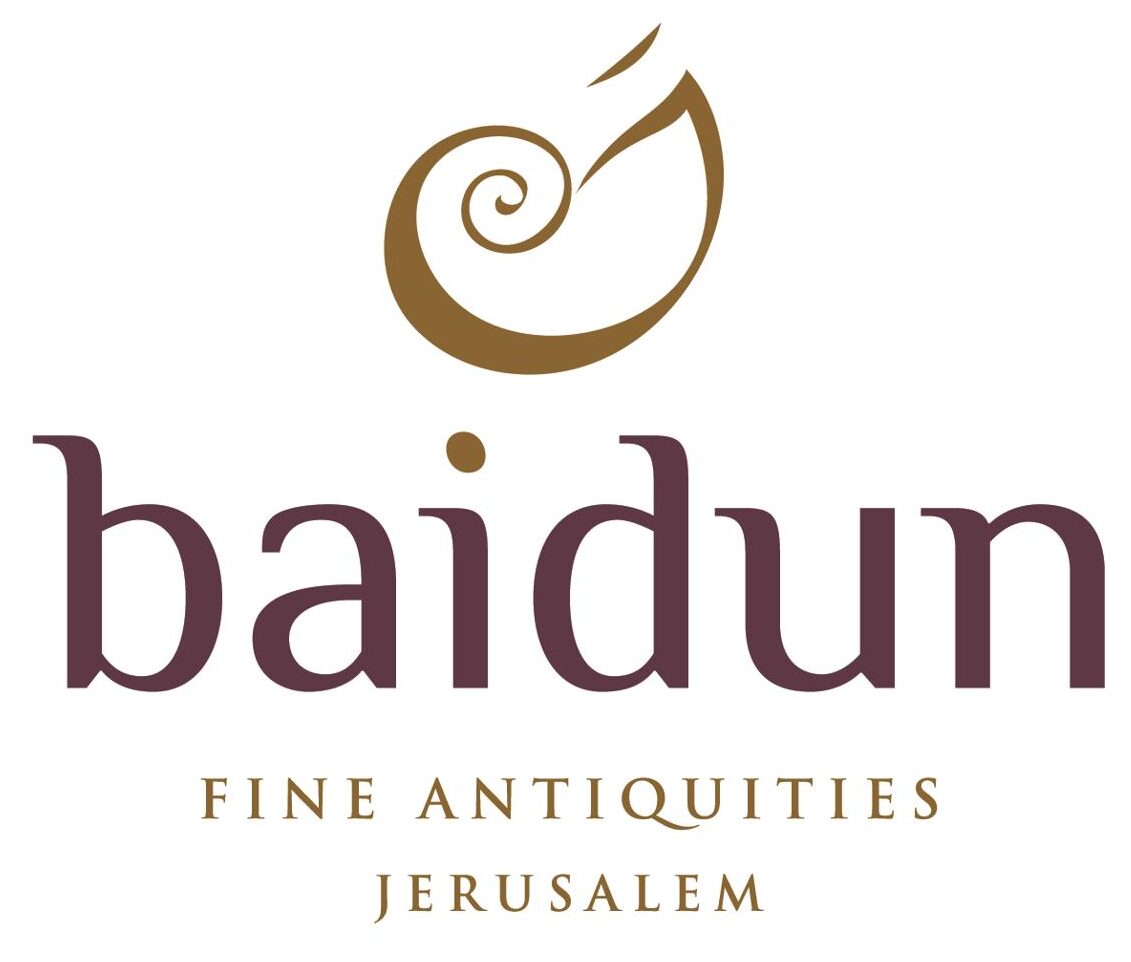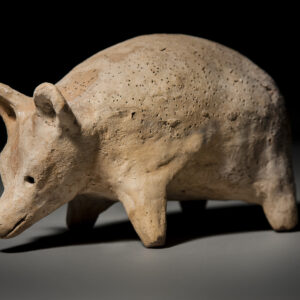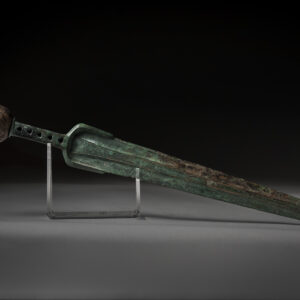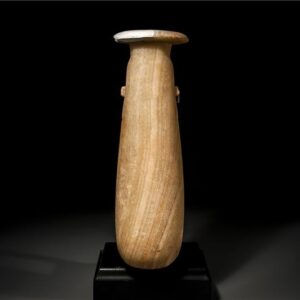This impressive object is an epsilon axe head – so named for its similarity to the Greek letter of that name – from the end of the Middle Kingdom period of ancient Egypt. Epsilon axes were used throughout the Middle East – notably Canaan – and in Egypt in the ancient world, although variants were used across Europe in later periods. They are characterised by an elongated metal blade which hugs the wooden shaft to which it is attached by up to three lug fixtures; these pierce the shaft and are pegged through using rivets. The mechanical attributes of the blade mean that it is less prone to breakage than a more elongated axehead, and can be more easily manipulated in constrained spaces. It is also lighter and quicker to draw and use, and thus ideally suits the context for which it was designed: battle.
The high level of expense involved in casting or forging a sword (at this period in copper/bronze rather than iron) meant that it was not practical to arm large numbers of soldiers with such weapons. They would therefore be limited to spears and perhaps daggers at close quarters. These weapons therefore equipped the soldiery for medium/close range combat, were less expensive to produce than swords (as the weapon gained stability and rigidity from the wood handle) and also had great visual impact in a battle context. Axes such as this were phased out as the wearing of heavy armour necessitated heavier ‘piercing’’ axes in the New Kingdom and later periods.









